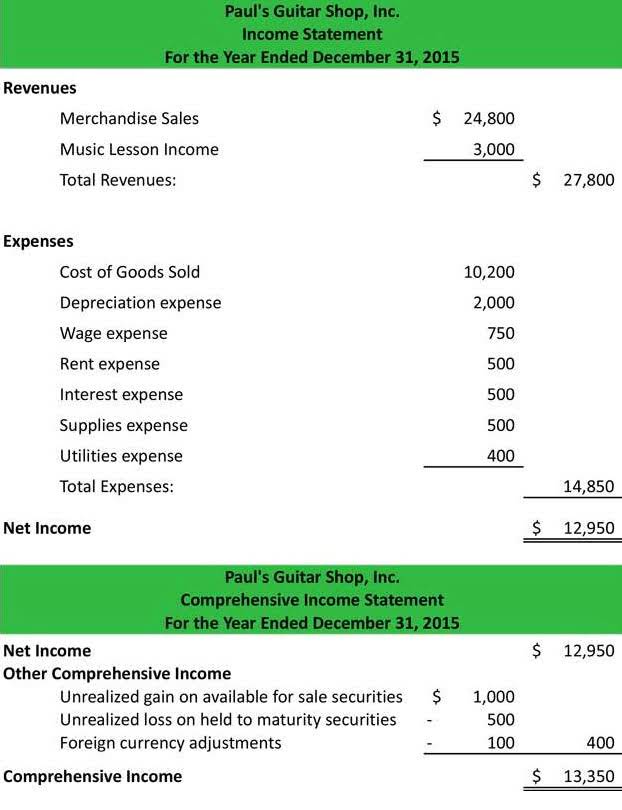
In this setup, you jot down all debit entries on the left and all credit entries on the right. To find the account balance, subtract the total debits from the total credits. A positive result means a debit balance; a negative result means a credit balance.

To Lobby or Not to Lobby: Understanding Your Association’s Rights
Since the loss is outside of the main activity of a business, it is reported as a nonoperating or other loss. The term losses is also used to report the writedown of asset bookkeeping amounts to amounts less than cost. It is also used to refer to several periods of net losses caused by expenses exceeding revenues.
Potential Proposals on the Horizon: It’s Time to Prepare Your Estate…
- Yes, similar to journal entries, T accounts should also always balance.
- Let’s illustrate the general journal entries for the two transactions that were shown in the T-accounts above.
- T-accounts may fail to capture the full picture in business scenarios involving multiple accounts and numerous transactions.
- Expenses decrease the owner’s equity and are recorded as debits, so the Utility Expense account will be debited for $150.
For liabilities and equity accounts, however, debits always signify a decrease to the account, while credits always signify an increase to the account. A ledger is a complete record of all financial transactions for a company, organized by account. It includes a list of all T-accounts and their balances, providing a comprehensive view of a company’s financial position.

Ensuring Financial Integrity in Church Operations

Since services are sold on credit, the accounts receivable account increases and gets debited for $600. Revenue also increases, so the Repair Service Revenue account gets credited for $600. If you want a career in accounting, T Accounts may be your new best friend. A T account ledger is an informal way of addressing a double-entry bookkeeping system. On the top, the name of the ledger is mentioned, the left side is for debit entries, and the right side is for credit entries within the ledger.
How to Post Journal Entries to T-Accounts or Ledger Accounts
The spreadsheet lets you see how your spending habits impact your overall balance. Once you master these steps, T-accounts become a powerful tool for visualizing and understanding your business transactions. They help you track cash flow, analyze expenses, and ensure all your financial ducks are in a row. Don’t be afraid to experiment with different scenarios – the more you practice, the more confident you’ll become in managing your financial data.
- The asset Equipment increases by $2,500 and is recorded as a debit.
- Well, don’t take our word for it – give the software a try out yourself.
- Without such analytical tools, businesses may struggle to effectively assess profitability, liquidity, and solvency.
- Think of it as a financial X-ray, giving loan officers a glimpse into the inner workings of a business.
- So grasping these basics helps you delve into these reports and understand the financial story they tell.

As there were only six transactions, it was probably not too difficult. However, many enterprises have to record hundreds of transactions per day. Having individual T-accounts within the nominal ledger makes it much easier to collect the information from many different types of transactions. The next section will explain what is done with the balances in each of these accounts. Included are the income statement accounts (revenues, expenses, gains, losses), summary accounts (such as income summary), and a sole proprietor’s drawing account. A current liability account that reports the Bookstime amounts owed to employees for hours worked but not yet paid as of the date of the balance sheet.
Accountants and Bookkeepers
The left side of the Account is always the debit side and the right side is always the credit side, no matter what the account is. Congrats, if you got through that, you are going to be doing pretty well with T accounts. Pause here and see if you can work out this problem using T accounts. Now that we established a T account is a visual representation of an account, most people wonder if they can do this for any account. Take self-paced courses to master the fundamentals of finance and connect with like-minded individuals.
Debits and Credits are simply accounting terminologies that can be traced back hundreds of years, which are still used in today’s double-entry accounting system. As a result, the reversed receipt shows the transactionas still applied. There is another concept that may be helpful to t accounts grasp if you want to fully understand debits and credits.



